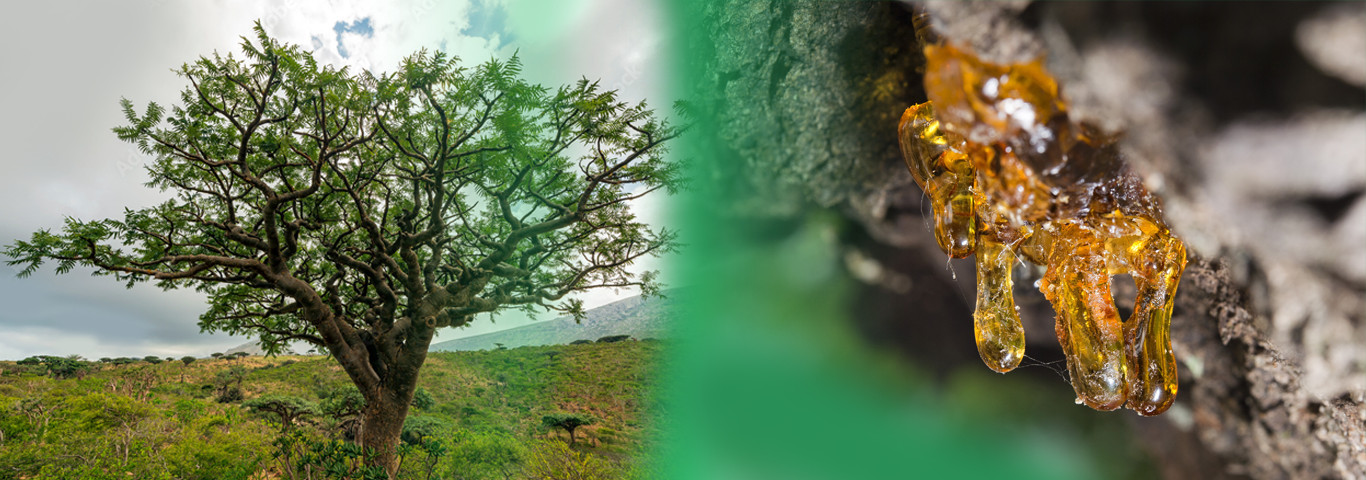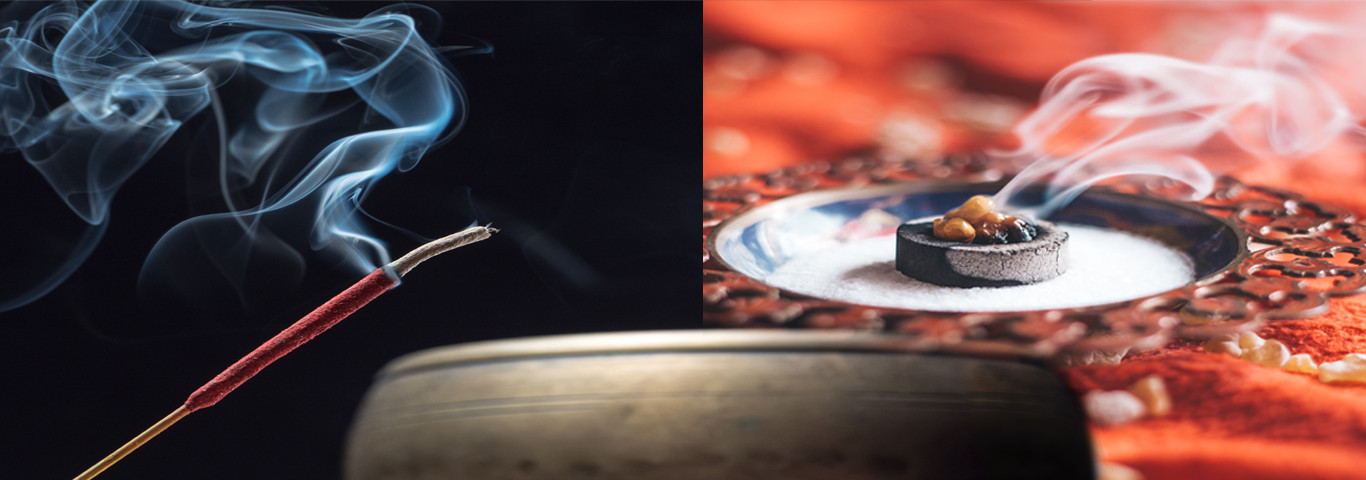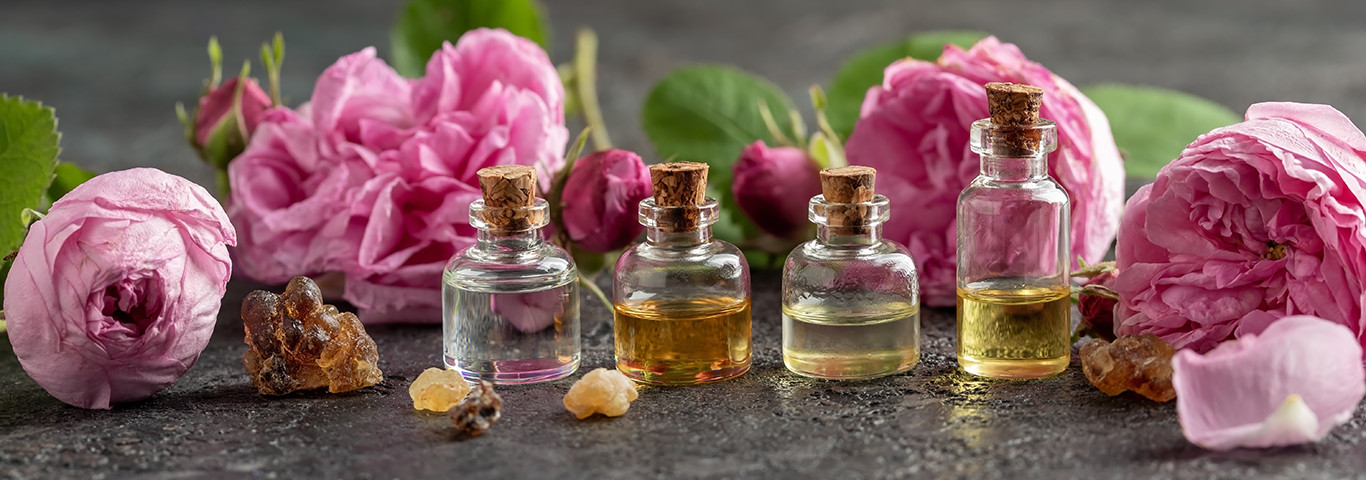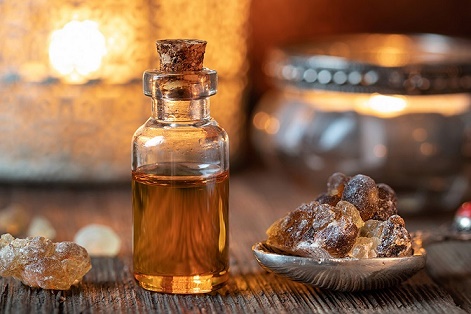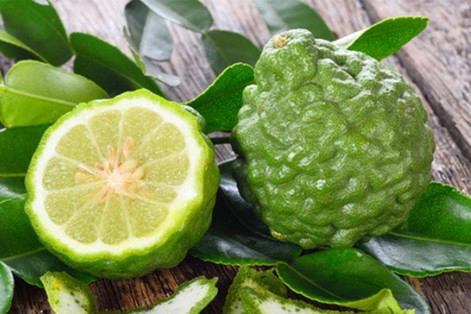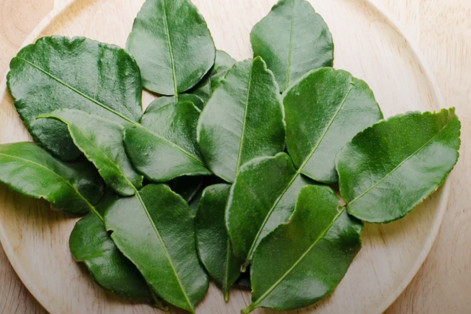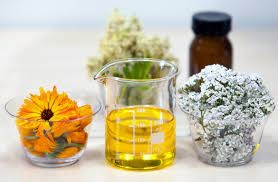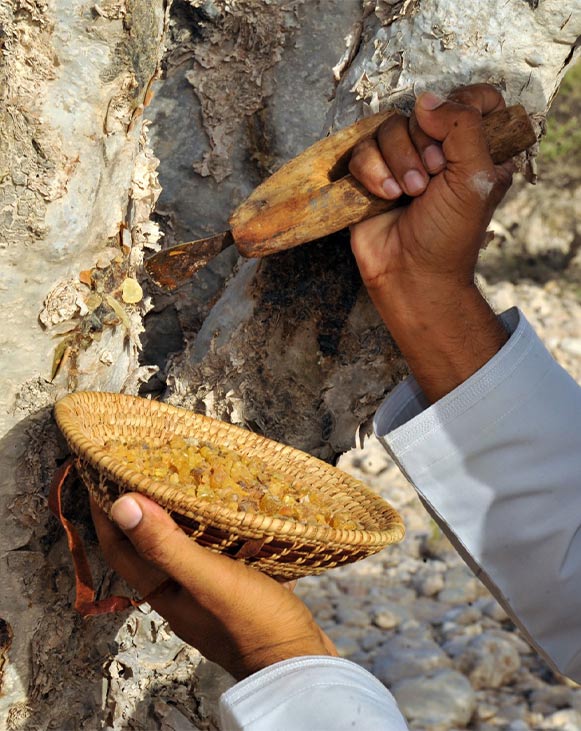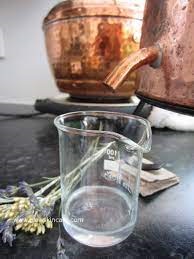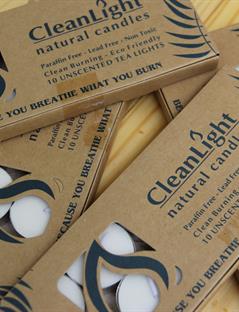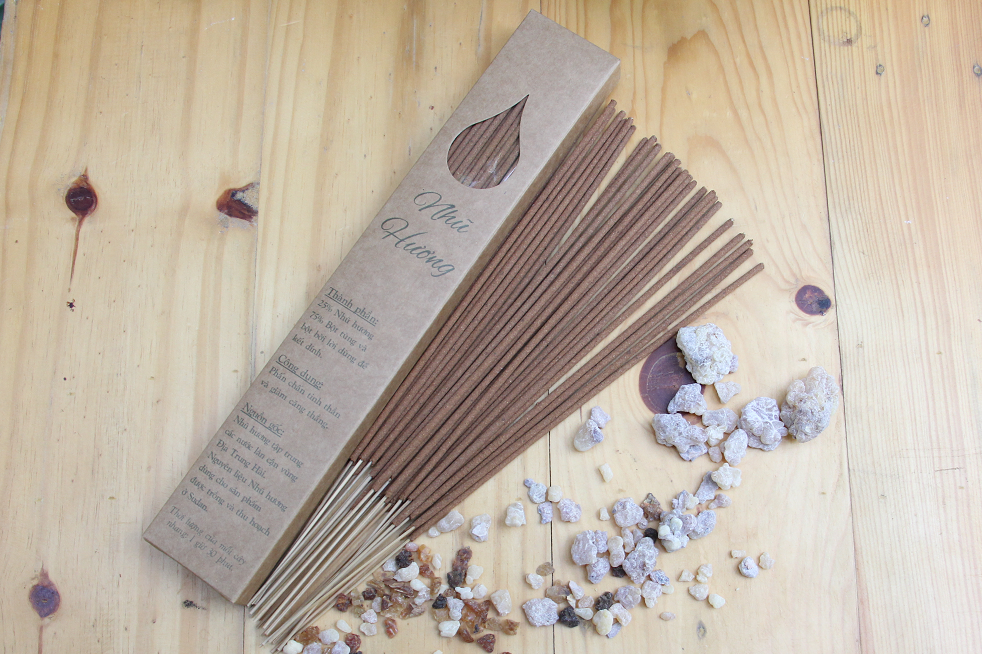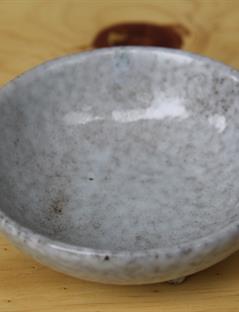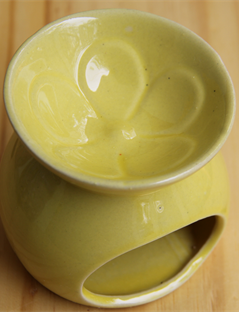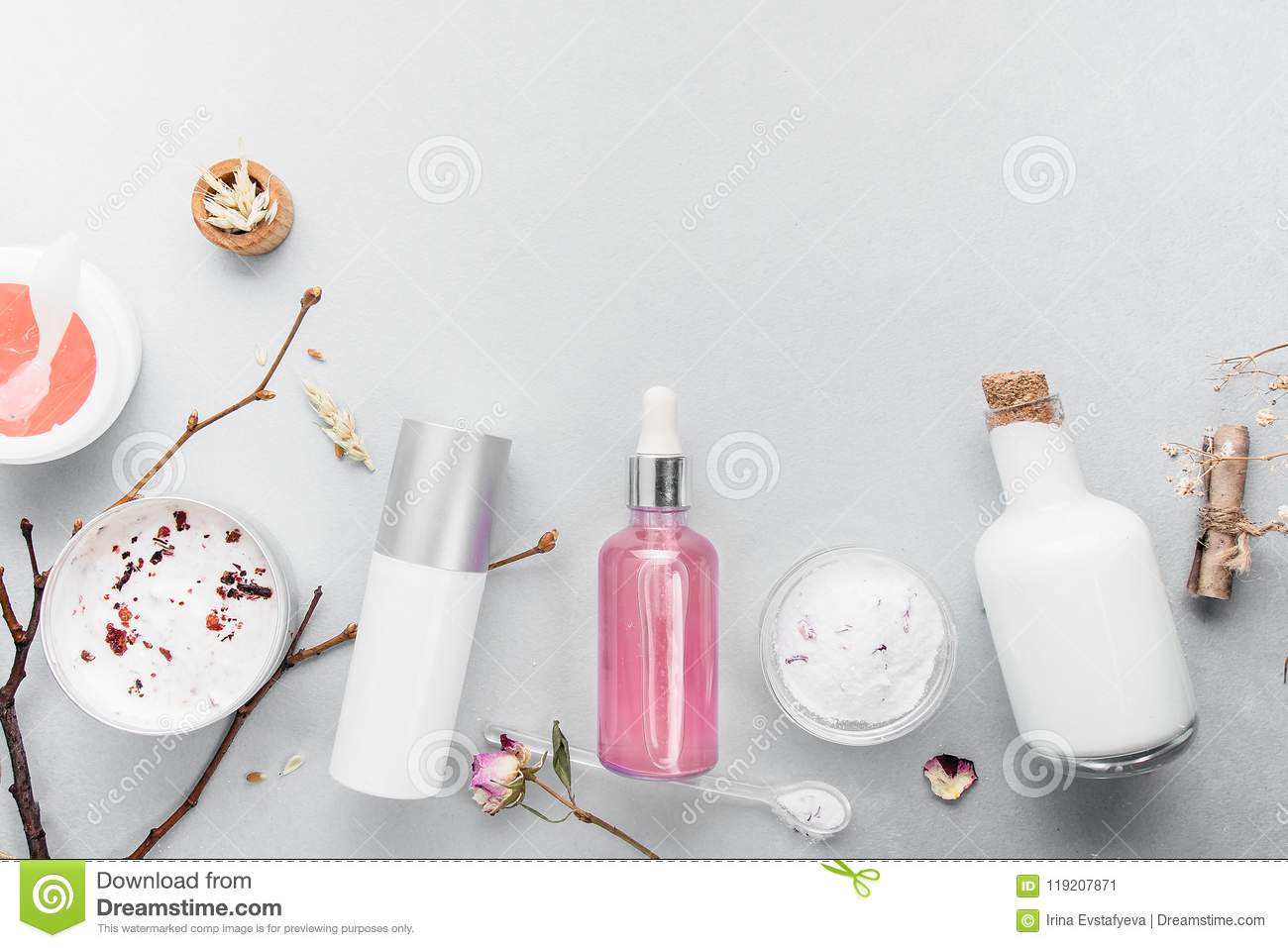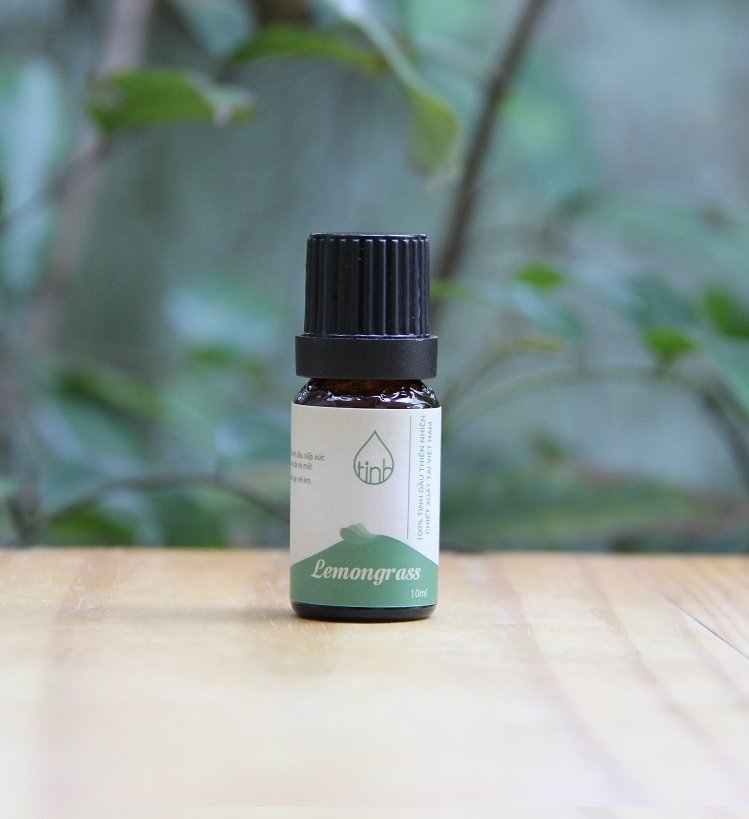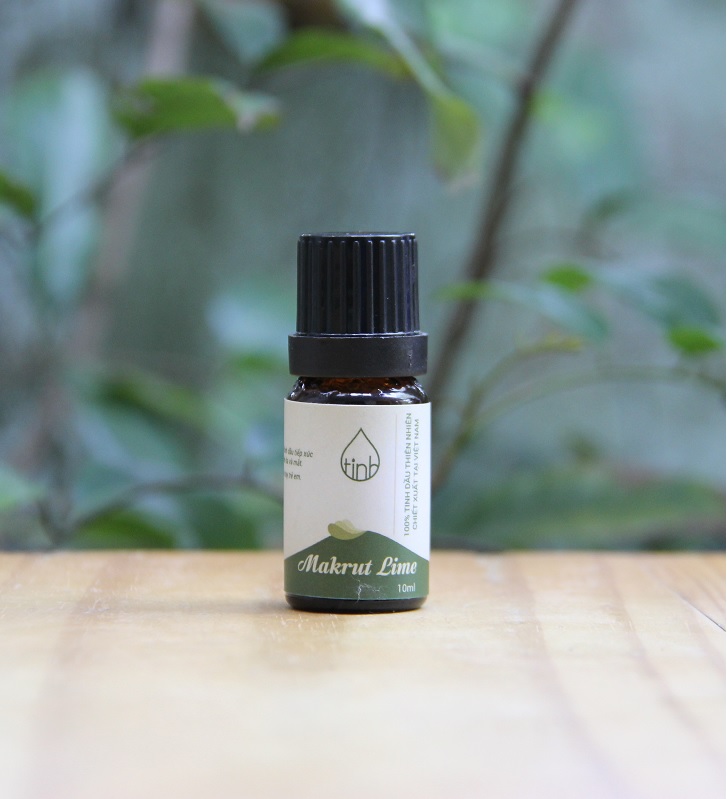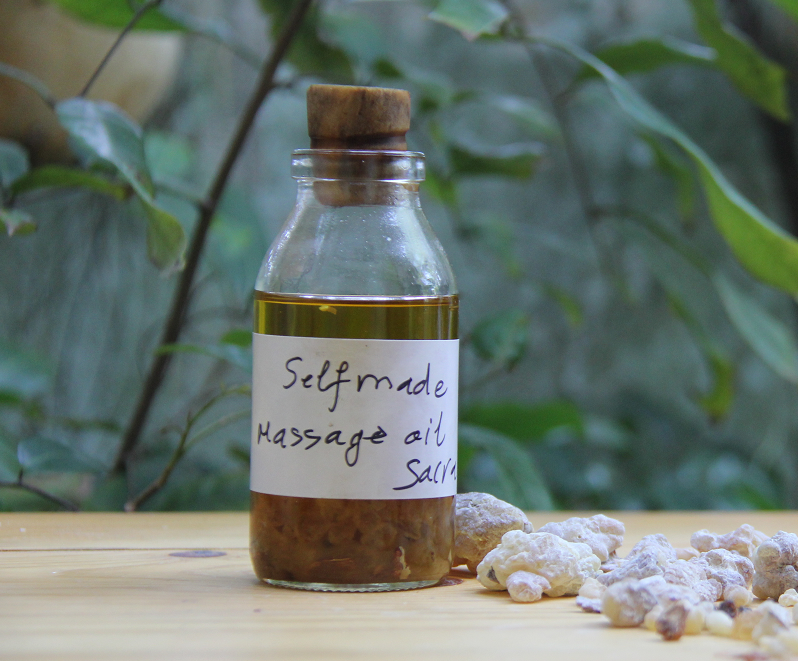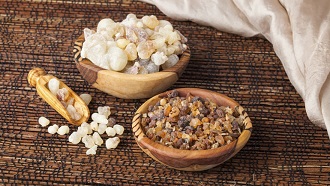Tinh dầu được sử dụng từ thời xa xưa hàng ngàn năm về trước cho việc điều trị và chữa lành. Các nguyên liệu chính của tinh dầu là từ lá, thân, vỏ và rễ cây, vì trong các nguyên liệu này chứa các thành phần bổ trợ cho sức khỏe. Vậy tinh dầu nhũ hương là gì?
Nhũ hương là sử dụng thông thường, còn có tên khác là olibanum. Tại Việt nam nhũ hương sử dụng nhiều trong nghi thức của Công Giáo, bên cạnh đó trong điều trị của đông y cũng sử dụng nhũ hương trong một số bài thuốc để giúp giảm đau và lưu thông khí huyết. Nhũ hương cũng được nghiên cứu về khả năng trong việc.
Tinh dầu nhũ hương là như thế nào?
Tinh dầu nhũ hương có nhiều loại tùy thuộc vào loại cây được phân bố theo từng lãnh thổ quốc gia khác nhau ví dụ nhưng carterii, papyreifera ở Somalia, ngoài ra papyreifera có thể tìm thấy ở Sudan vàn Ethotopia. Sacra đặc trưng chỉ tìm thấy ở Oman với mùi hương nồng
The word frankincense comes from the term “franc encens,” which means quality incense in old French. Frankincense has been associated with many different religions over the years, especially the Christian religion, as it was one of the first gifts given to Jesus by the wise men. What does frankincense smell like? It smells like a combination of pine, lemon and woody scents.
Boswellia serrata is a tree native to India that produces special compounds that have been found to have strong anti-inflammatory, and potentially anti-cancer, effects. Among the valuable boswellia tree extracts that researchers have identified, several stand out as being most beneficial, including terpenes and boswellic acids, which are strongly anti-inflammatory and protective over healthy cells. (1)
How to use frankincense oil? Frankincense oil is used by either inhaling the oil or absorbing it through the skin, usually mixed with a carrier oil, such as coconut oil or jojoba oil. It’s believed that the oil transmits messages to the limbic system of the brain, which is known to influence the nervous system. A little bit of oil goes a long way, and it should not be ingested in large quantities as it can be toxic.
If you’re purchasing essential oils, avoid oils that say “fragrance oil” or “perfume oil” as these can be synthetic and don’t provide the desired health benefits. Instead, look for oils that say “pure essential oil” or “100% essential oil” for the highest quality essential oils. I like to take advantage of the best frankincense oils, which should feature a combination of multiple varieties of oils from boswellia trees.
Related: Blue Tansy Oil Benefits for Skin & Beyond (+ How to Use)
10 Benefits of Frankincense Oil
1. Helps Reduce Stress Reactions and Negative Emotions
When inhaled, frankincense oil been shown to reduce heart rate and high blood pressure. It has anti-anxiety and depression-reducing abilities, but unlike prescription medications, it does not have negative side effects or cause unwanted drowsiness.
For example, in mice, burning Boswellia resin as incense had antidepressive effects. “Incensole acetate, an incense component, elicits psychoactivity by activating TRPV3 channels in the brain.” This channel in the brain is implicated in the perception of warmth in the skin. (2)
2. Helps Boost Immune System Function and Prevents Illness
Studies have demonstrated that frankincense benefits extend to immune-enhancing abilities that may help destroy dangerous bacteria, viruses and even cancers. Researchers at Mansoura University in Egypt conducted a lab study and found that frankincense oil exhibits strong immunostimulant activity. (3, 4)
It can be used to prevent germs from forming on the skin, mouth or in your home. This is the reason many people choose to use frankincense to naturally relieve oral health problems; the antiseptic qualities of this oil may help prevent gingivitis, bad breath, cavities, toothaches, mouth sores and other infections from occurring. (5)
3. May Help Fight Cancer or Deal with Chemotherapy Side Effects
Several research groups have found that frankincense has promising anti-inflammatory and anti-tumor effects when tested in lab studies and on animals. Frankincense oil has been shown to help fight cells of specific types of cancer. Researchers in China investigated the anticancer effects of frankincense and myrrh oils on five tumor cells lines in a lab study. The results showed that human breast and skin cancer cell lines showed increased sensitivity to the combination of myrrh and frankincense essential oils. (6)
A 2012 study even found that a chemical compound found in frankincense called AKBA is successful at killing cancer cells that have become resistant to chemotherapy, which may make it a potential natural cancer treatment. (7)
4. Astringent and Can Kill Harmful Germs and Bacteria
Frankincense is an antiseptic and disinfectant agent that has antimicrobial effects. It has the ability to eliminate cold and flu germs from the home and the body naturally, and it can be used in place of chemical household cleaners.
A lab study published in Letters in Applied Microbiology found that the combination of frankincense oil and myrrh oil is particularly effective when used against pathogens. These two oils, which have been used in combination since 1500 BC, have synergistic and additive properties when exposed to microorganisms like Cryptococcus neoformans and Pseudomonas aeruginosa. (8)
5. Heals Skin and Prevents Signs of Aging
Frankincense benefits include the ability to strengthen skin and improve its tone, elasticity, defense mechanisms against bacteria or blemishes, and appearance as someone ages. It may help tone and lift skin, reduce the appearance of scars and acne, and heals wounds. It may also be beneficial for fading of stretch marks, surgery scars or marks associated with pregnancy, and for healing dry or cracked skin.
According to a review published in the Journal of Traditional and Complementary Medicine, frankincense oil reduces redness and skin irritation, while also producing a more even skin tone. Studies suggest that it’s the pentacyclic triterpene (steroid-like) structure of frankincense oil that contributes to its soothing effect on irritated skin. (9)
6. Improves Memory
Research suggests that frankincense oil can be used to improve memory and learning functions. And some animal studies even show that using frankincense during pregnancy may increase the memory of a mother’s offspring.
In one such study, when pregnant rats received frankincense orally during their gestation period, there was a significant increase in the power of learning, short-term memory and long-term memory of their offspring. (10)
7. May Help Balance Hormones and Improve Fertility
Frankincense oil benefits may include reducing symptoms associated with menstruation and menopause by balancing hormone levels, although the research on this topic is limited. It has been used to help relieve pain, cramps, constipation, headaches, anxiety, nausea, fatigue and mood swings. Frankincense oil may also help with regulating estrogen production and may reduce the risk of tumor or cyst development in premenopausal women.
Animal studies have shown that frankincense oil can be used as a fertility promoting agent, which may be due to the oil’s chemical structure acting similarly to that of steroids. When frankincense was used on rats internally, it increased fertility, and the number of implantations and viable fetuses, which suggests that the oil may possibly increase sperm motility and density. (11)
8. Eases Digestion
Frankincense helps the digestive system to properly detox and produce bowel movements. It may also help to reduce pain and cramping in the stomach, relieve nausea, flush out excess water from the abdomen that can cause bloating and even relieve PMS-related stomach pains. (12)
It does this by speeding up the secretion of digestive enzymes, increasing urination production, relaxing the muscles of the digestive tract and also helps improve circulation, which is needed for proper digestive health. It’s been shown to be beneficial in reducing symptoms of leaky gut syndrome, chronic colitis, ulcerative colitis, Crohn’s disease and IBS. (13)
9. Acts as a Sleep Aid
Frankincense uses include lowering levels of anxiety or chronic stress that can keep you up at night. It has a calming, grounding scent that can naturally help you to fall asleep. This natural sleep aid helps open breathing passages, allows your body to reach an ideal sleeping temperature and can eliminate pain that keeps you up. (14)
10. Helps Decrease Inflammation and Pain
Frankincense can inhibit the production of key inflammatory molecules associated with conditions like arthritis, asthma, painful bowel disorders like IBS and many more conditions. (15)
It can be useful in helping prevent the breakdown of the cartilage tissue and has been shown to significantly reduce levels of dangerous and painful inflammation, making it a natural treatment option for pain-related conditions that affect the muscles, joints and tendons.


